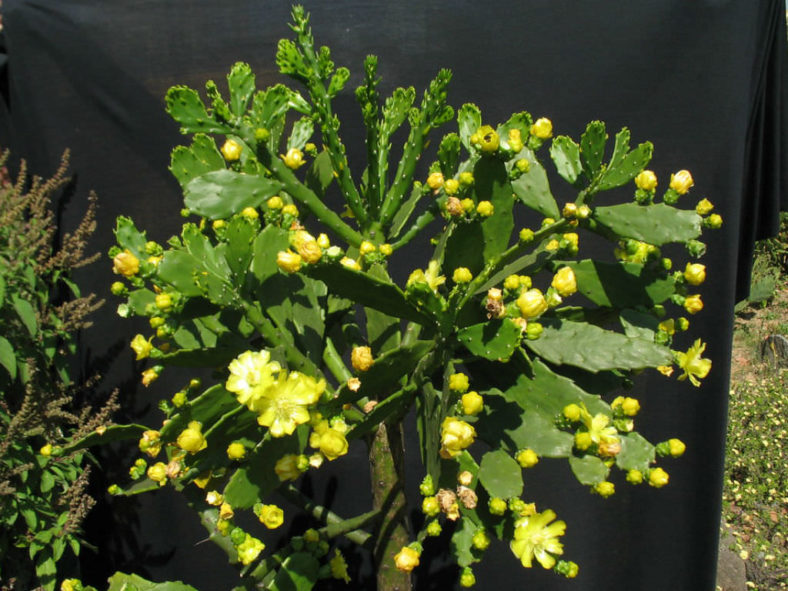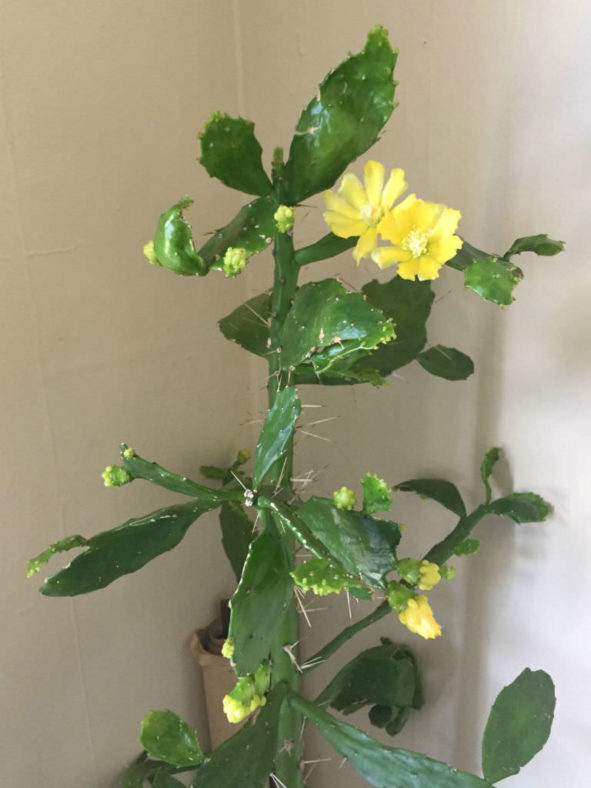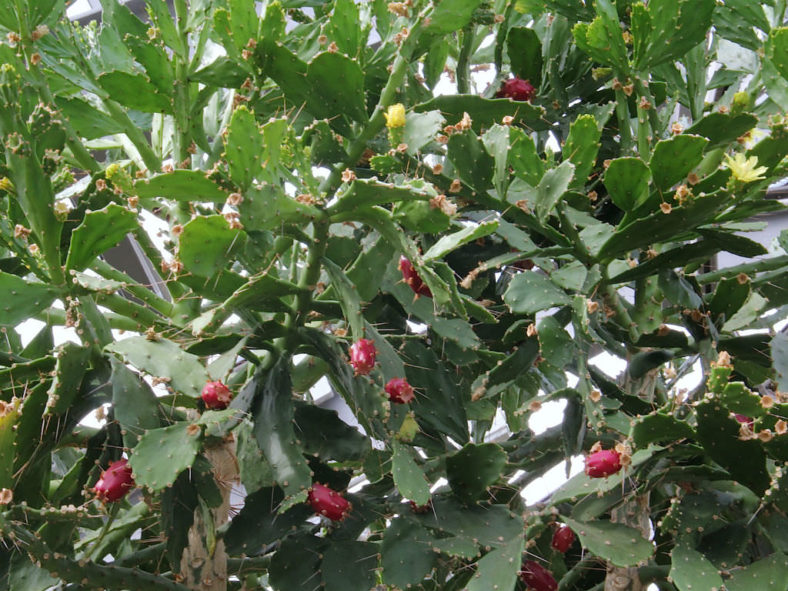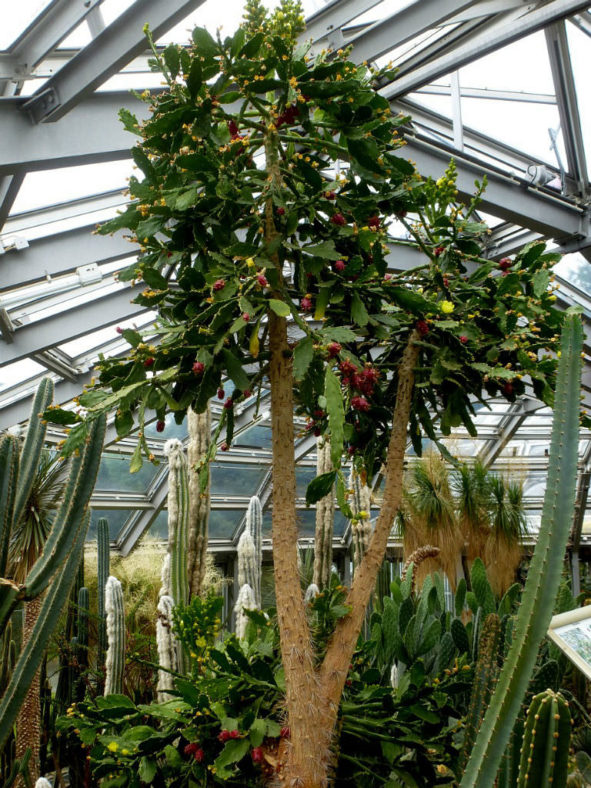Scientific Name
Brasiliopuntia brasiliensis A.Berger
Common Name(s)
Brazilian Prickley Pear
Synonym(s)
Cactus brasiliensis, Opuntia brasiliensis
Scientific Classification
Family: Cactaceae
Subfamily: Opuntioideae
Tribe: Opuntieae
Genus: Brasiliopuntia
Origin
Brasiliopuntia brasiliensis is native to Brazil, Paraguay, eastern Bolivia, Peru, and northern Argentina. It has become naturalized in Florida, among other places.
Description
Brasiliopuntia brasiliensis is a tree-like cactus with thin, slightly shrunken cladodes on a central cylindrical trunk. It can grow up to 66 feet (20 m) tall. The leaves are small and bright green. The white areoles bear reddish or brow, upright spines measuring up to 0.6 inches (1.5 cm) long.
The flowers are pale yellow to bright yellow-orange and can reach up to 1.6 inches (4 cm) in length and diameter. They appear only on adult plants. The fruits are yellow, orange-red, red or purple, pear-shaped, and can grow up to 1.6 inches (4 cm) long.

Hardiness
USDA hardiness zones 10a to 11b: from 30 °F (−1.1 °C) to 50 °F (+10 °C).
How to Grow and Care
The large variety of species within the Opuntia genus means different Prickly Pears may need slightly different care. All are desert cacti that need lots of sun, light, and very little water. So, if you live in a hot, arid area, these plants can generally be planted outside, left alone, and enjoyed.
These cacti will grow just fine in a garden but can also be grown in pots. To repot, ensure the soil is dry, remove the pot, and remove the old soil. After treating any cuts with fungicide, place the cactus in a new pot and backfill it with potting soil. As with a new cutting, ensure not to water a newly repotting Prickly Pear briefly to avoid rotting its roots.
Opuntia can be propagated either by cuttings or by seed. To propagate by cuttings, sever pads from a plant and let them dry to heal the wounds. Then, place the plants in dry soil and refrain from watering them until they begin to grow to avoid rotting them.
Learn more at How to Grow and Care for Opuntia.
Links
- Back to genus Brasiliopuntia
- Succupedia: Browse succulents by Scientific Name, Common Name, Genus, Family, USDA Hardiness Zone, Origin, or cacti by Genus
Photo Gallery
Click on a photo to see a larger version.


